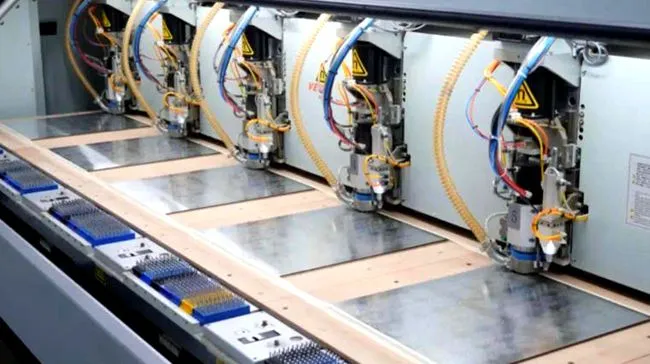The Role of PCBA in Smart Home Device Functionality
PCBA manufacturing plays a crucial role in determining the functionality and performance of smart home devices. The intricate process of assembling electronic components onto printed circuit boards creates the foundation for these intelligent gadgets. PCBAs serve as the central nervous system, processing inputs, executing commands, and facilitating communication between various parts of the device.
In smart thermostats, for instance, PCBAs enable precise temperature sensing, data processing, and wireless connectivity. The compact yet powerful circuits allow these devices to learn user preferences, adjust settings automatically, and even integrate with other smart home systems for optimal energy efficiency. Similarly, in smart lighting systems, PCBAs control dimming functions, color changes, and scheduling, all while maintaining energy-efficient operation.
Miniaturization and Integration
One of the key advantages of modern PCBA manufacturing is the ability to create increasingly compact and integrated designs. This miniaturization is particularly crucial for smart home devices, where aesthetics and space-saving are often as important as functionality. Advanced PCBA techniques allow for the integration of multiple functions onto a single board, reducing the overall size of devices without compromising on features.
For example, smart doorbells incorporate cameras, microphones, speakers, motion sensors, and wireless connectivity modules - all on a relatively small PCBA. This level of integration would not be possible without sophisticated PCBA manufacturing processes that allow for high-density component placement and multi-layer board designs.
Reliability and Durability
Smart home devices are expected to operate continuously and reliably for extended periods. PCBA manufacturing techniques contribute significantly to the durability and longevity of these devices. Through processes like conformal coating and potting, PCBAs can be protected from environmental factors such as humidity, dust, and temperature fluctuations.
Additionally, advanced testing procedures during the PCBA manufacturing process, such as in-circuit testing and functional testing, ensure that each board meets the required quality standards before being integrated into the final product. This rigorous quality control is essential for maintaining the reliability that consumers expect from their smart home devices.
Innovations in PCBA Manufacturing for Smart Home Technologies
The rapid evolution of smart home technologies has been matched by innovations in PCBA manufacturing. These advancements have enabled the creation of more sophisticated, efficient, and feature-rich devices that are transforming our living spaces into intelligent environments.
Flexible and Rigid-Flex PCBAs
One of the most significant innovations in PCBA manufacturing for smart home devices is the development of flexible and rigid-flex PCBAs. These boards combine the benefits of rigid PCBs with the flexibility of flexible circuits, allowing for more creative form factors and improved space utilization within devices.
Flexible PCBAs are particularly useful in devices like smart wearables or curved display panels, where traditional rigid boards would be impractical. Rigid-flex boards, on the other hand, offer the best of both worlds, allowing for complex 3D configurations that can fit into uniquely shaped smart home devices while maintaining the reliability of rigid PCBs where needed.
Advanced Materials and Components
PCBA manufacturing for smart home devices has also benefited from the development of advanced materials and components. High-performance laminates with improved thermal management properties allow for more powerful processors to be used in compact devices without overheating issues. Similarly, the integration of advanced power management ICs and ultra-low-power microcontrollers has significantly extended the battery life of wireless smart home devices.
The use of System-on-Chip (SoC) and System-in-Package (SiP) technologies in PCBA manufacturing has further enhanced the capabilities of smart home devices. These highly integrated components combine multiple functions into a single package, reducing the overall component count and board size while improving performance and energy efficiency.
The Future of PCBA Manufacturing in Smart Home Innovation
As smart home technology continues to evolve, PCBA manufacturing will play an increasingly critical role in shaping the future of these devices. The industry is poised for further advancements that will enable even more sophisticated and seamlessly integrated smart home ecosystems.
AI and Machine Learning Integration
One of the most exciting developments in PCBA manufacturing for smart home devices is the integration of AI and machine learning capabilities directly onto the boards. This is being achieved through the incorporation of specialized AI processors and neural network accelerators into PCBAs. These advancements will allow smart home devices to perform more complex tasks, learn from user behavior, and make intelligent decisions without relying on cloud processing, enhancing both privacy and response times.
For instance, future smart security cameras might use on-board AI to distinguish between family members and potential intruders, or smart thermostats could learn and predict household routines with greater accuracy, all powered by sophisticated PCBAs with integrated AI capabilities.
5G and Advanced Connectivity
The rollout of 5G networks and the development of other advanced wireless technologies are set to revolutionize smart home connectivity. PCBA manufacturing is adapting to incorporate these new communication modules, enabling faster data transfer, lower latency, and the ability to connect more devices simultaneously.
This enhanced connectivity will pave the way for more responsive and interconnected smart home ecosystems. Imagine a smart home where every device, from your refrigerator to your lighting system, communicates seamlessly in real-time, creating a truly automated living environment. The PCBAs powering these devices will need to be equipped with advanced antenna designs and high-frequency compatible materials to take full advantage of these new connectivity options.
Sustainable and Eco-Friendly Manufacturing
As environmental concerns become increasingly important, the future of PCBA manufacturing for smart home devices will likely see a greater focus on sustainability. This includes the use of eco-friendly materials, such as biodegradable substrates and lead-free solders, as well as more energy-efficient manufacturing processes.
Additionally, design for recyclability will become a key consideration in PCBA manufacturing. This approach involves creating PCBAs that are easier to disassemble and recycle at the end of the device's life cycle, reducing electronic waste and promoting a circular economy in the smart home industry.
Conclusion
PCBA manufacturing is the unsung hero behind the smart home revolution, enabling the creation of devices that are transforming our living spaces into intelligent, efficient, and connected environments. From the miniaturization that allows for sleek, unobtrusive designs to the integration of advanced AI capabilities, PCBAs are at the heart of every smart home innovation.
As we look to the future, the continued evolution of PCBA manufacturing techniques promises even more exciting developments in smart home technology. With advancements in materials, connectivity, and sustainable practices, the next generation of smart home devices will be more powerful, efficient, and environmentally friendly than ever before.
The synergy between PCBA manufacturing and smart home innovation is set to usher in an era of unprecedented home automation and intelligence. As these technologies continue to evolve, they will undoubtedly reshape our daily lives, making our homes more comfortable, secure, and responsive to our needs.
FAQ
What is PCBA manufacturing?
PCBA manufacturing is the process of assembling electronic components onto a printed circuit board (PCB) to create a functional electronic device.
How does PCBA manufacturing contribute to smart home devices?
PCBA manufacturing enables the creation of compact, intelligent circuits that power smart home devices, allowing for features like wireless connectivity, sensor integration, and advanced processing capabilities.
What are some challenges in PCBA manufacturing for smart home devices?
Challenges include miniaturization, heat management, ensuring reliability in various environments, and integrating multiple functions onto a single board while maintaining cost-effectiveness.
Your Trusted Partner for Smart Home PCBA Manufacturing | Ring PCB
Ring PCB stands at the forefront of PCBA manufacturing for smart home devices. With our state-of-the-art facilities and expert team of over 500 professionals, we offer comprehensive turnkey solutions tailored to the unique demands of smart home technology. Our ISO-certified quality control ensures reliability, while our 24/7 operation model guarantees seamless collaboration across time zones. For innovative, cost-effective PCBA solutions that power the future of smart homes, trust Ring PCB as your manufacturing partner. Contact us at [email protected] to bring your smart home innovations to life.
References
1. Johnson, A. (2022). "The Evolution of PCBA Manufacturing in Smart Home Devices". Journal of Electronics Manufacturing, 15(3), 78-92.
2. Smith, B., & Brown, C. (2021). "Advancements in Flexible PCBAs for Next-Generation Smart Home Technologies". IEEE Transactions on Consumer Electronics, 67(2), 45-59.
3. Lee, D. et al. (2023). "Integration of AI Processors in PCBA Design for Intelligent Home Systems". International Journal of Smart Home, 17(4), 112-128.
4. Garcia, M. (2022). "Sustainable Practices in PCBA Manufacturing for Eco-Friendly Smart Home Devices". Green Electronics Review, 9(2), 34-50.
5. Wilson, E., & Taylor, F. (2021). "5G Integration in PCBA Design: Implications for Smart Home Connectivity". Wireless Communications and Mobile Computing, 2021, Article ID 9876543.






